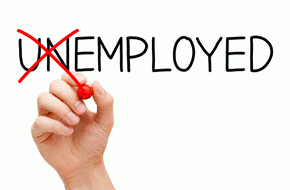
By Bernard Hickey
Unemployment fell as forecast to 6.0% in the December quarter as faster than expected jobs growth was soaked up by a higher participation rate and strong inwards net migration.
Economists said this growth of the pool of available labour was helping to keep wage growth relatively subdued, giving the economy some inflation breathing space as GDP growth of 3.5% gallops on. The overall result left most forecasts for the Official Cash Rate unchanged. All expect the Reserve Bank to start increasing the OCR by 25 basis points on March 13 and most expect the central bank to increase it around 2% over the next two years.
Statistics New Zealand reported the unemployment rate fell to 6.0% in the December quarter from 6.2% in the September quarter, while there were 24,000 jobs added and labour costs rose 0.5% in the quarter. Economists said the jobless rate was in line with forecasts, but the 1.1% jobs growth for the quarter and 3.0% growth for the year was higher than forecast.
ASB Chief Economist Nick Tuffley pointed out that employment had risen 2.3% over the last two quarters, which was far stronger than expected, yet unemployment had only fallen to 6.0% from 6.4% over that time.
"Growth in the labour force, via both population/migration growth and higher participation, is offsetting some of the gains in employment," Tuffley said.
"We expect that continued growth in the labour force will provide a greater supply of workers and slow down the fall in the unemployment rate relative to the RBNZ’s most recently published forecasts," he said.
The Labour Cost Index, which measures ordinary time salaries and wages, rose 1.6% in calendar 2013 and 0.5% for the quarter, which was in line with the consensus forecast.
Tuffley said wage growth remained subdued, but had bottomed out.
"There is nothing in today’s data that will cause alarm over wage growth at the RBNZ. We expect wage growth will rise from here, but only modestly. Low CPI inflation and a degree of slack in the labour market will keep wage growth down," he said.
"There will be no return to the kinds of earnings growth seen in the mid-2000s when unemployment was below 4%."
Finance Minister Bill English and Prime Minister John Key have both said in the last week they expected pay rates to start increasing in 2014 as the 'rock star' economy kept growing an labour market tightened. Key said on Monday he expected pay increases around the 2-3% mark. The Government is expected to increase the minimum wage by around 2% from NZ$13.75/hour to NZ$14/hour in April.
Surprisingly tame construction wage inflation
Construction worker jobs grew with Canterbury the standout with growth of 22% for the year.
Westpac economists said the tone of the employment figures was slightly stronger than expected, although wage growth was subdued. It noted a fall in annual construction industry wage inflation in Canterbury to 2.8% in the December quarter from 3.7% in the September quarter.
The New Zealand dollar rose around 0.4 USc to 82.6 USc on the figures, while the two year swap interest rate rose just 1 basis point.
BNZ Economist Craig Ebert said labour market activity was accelerating, but was not yet translating into inflation because of rising population growth through net inward migraiton, driven partly by fewer departures and partly by new immigrants.
"This is principally a timing issue, meaning it’s only a matter of time before we see wage inflation pick up the pace. And when it does it will probably catch many by surprise," Ebert said.
"This is why the RBNZ needs to start taking its pedal off the metal," he said.
Ebert said population growth could rise to 1.4% this year from 0.7% in 2012, with annual growth in the working age population already up to 1.23% from 0.78% in 2012.
Ebert said any concerns about wage inflation were kept at bay in the Labour Cost Index and Quarterly Employment Survey data.
"Indeed, in respect to the “on watch” area, the construction sector, wages were slowing in all jurisdictions, having been on a roll over recent years, markedly so in Canterbury (for obvious reasons). And, overall, the proportions gaining pay increases remained relatively low."
High participation rate
ANZ Senior Economist Mark Smith said the rise in the labour force participation rate by 0.3 percentage points to 68.9%, the second highest on record, had tempered the fall in the unemployment rate.
"In the absence of lifting participation, the unemployment rate would have fallen to 5.6 percent, the lowest since March 2009," he said.
Smith said Labour Cost Index inflation of 1.6% for the year remained contained under the mid-point of the Reserve Bank's inflation target and was as expected, given the lags from the economic rebound and a still low rate of consumer price inflation.
"A strong backdrop for economic activity, with only modest growth in supply side capacity, is expected to translate into lifting consumer prices and wages. We continue to expect a March start to OCR hikes, with 75bps of OCR hikes over the first half of the year," he said.
(Updated with more details, comments, reaction)

We welcome your comments below. If you are not already registered, please register to comment
Remember we welcome robust, respectful and insightful debate. We don't welcome abusive or defamatory comments and will de-register those repeatedly making such comments. Our current comment policy is here.